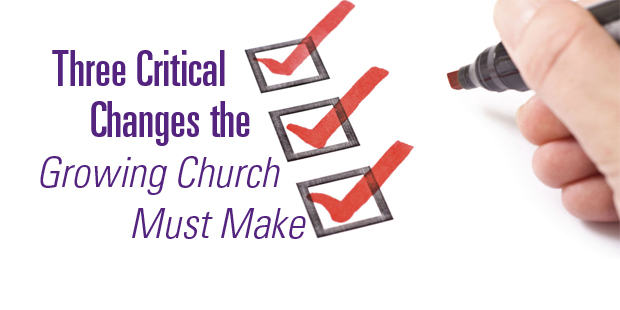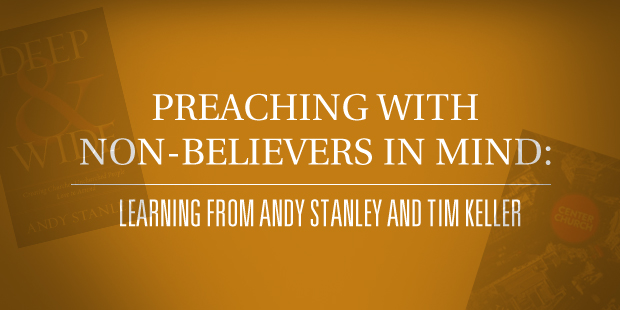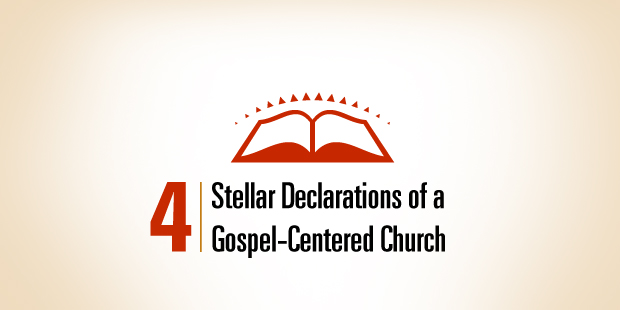
Three Critical Changes the Growing Church Must Make
Perhaps one of the biggest challenges leaders in growing churches face is the sense of failing to meet expectations, particularly of some who were in the church when the church was not as large as she currently is. Here are a couple of examples from recent conversations with church leaders:
Example A:
Some members of a church of 2,100 in attendance expect the senior pastor to visit them if they are in the hospital. These members were in the church when it was 250-300 people and that is how the pastor led during that season. Other members in the same church would never even think their senior pastor would or should be at the hospital for their appendectomy or bout with kidney stones. In fact, when a pastor calls these folks, they are blown away “that we have such a relational pastor.” What some view as a calloused leader, others view as a compassionate one.
Example B:
Some members of a church of 500 in attendance are surprised to learn that the student ministry bought a new sound system. In the past, when the church was just getting started, each of these types of decisions was discussed in a quarterly meeting, and some of the members remember those days. Now, it seems, “decisions are just made with no communication.” Newer members in this church never complain that a sound system purchase should be discussed, nor does it seem they want to endure long meetings to discuss those types of decisions. What some view as an essential directional decision, others view as an issue of execution.
How do we make sense of the difference in perspective? A wise pastor once told me that for many people “in their minds, the church is always the size it was when they first joined.” In other words, in the minds of many people, the church should still function like the church did when they joined.
The reality is that a growing church must change some ways in which she functions. And if she doesn’t, her growth will be hampered.
A church should not change or evolve doctrinally, as a church should stand on the “faith delivered once for all to the saints.” Nor must a church change her ministry philosophy and mission in her local community. I am simply suggesting that as a church grows, if a church grows, how she functions in at least these three areas will need to change.
1. The expectations on the senior pastor
As a church grows, it is illogical for a pastor to perform every wedding, lead every funeral, and visit every hospital. Some would wisely argue that regardless of church size, the biblical mandate on a pastor is not to “do the ministry” anyway but to equip others for ministry (Ephesians 4:11-12). But from a logical vantage point, as a church grows, the senior pastor’s role will need to adjust. While remaining connected to people and the community, the pastor will focus more and more time on teaching, on staff development, and on the overarching direction of the church.
2. Decision-making
As a church grows, how she makes decisions will need to change. For example, as a church hires more specialized staff, some of the decisions related to ministry execution should be entrusted to those staff members. They are both trained and equipped for their realms of responsibility and deeply connected to their ministry areas. This is not to say that an oversight group (board, elder team, senior staff, etc.) no longer stewards the overall direction, doctrine, and ministry approach of the church but that many decisions will be pushed to leaders who shepherd groups of people within the church.
3. Communication to the church
As a church grows, communication to the broader body will likely need to change. For example, group leaders in a church of 70 who once stood up at the end of the service to invite new folks to their group likely won’t be able to do so in a church of 700 as there are now lots of groups.
Of course, change is challenging and inevitably results in tension as some people’s expectations will not always be met. Ironically, some of the unfulfilled expectations are ones the church helped set years ago. If a church continues to grow, the tension will continually be there. Wise leaders teach and remind people to hold tightly to the doctrine of the church and the ministry philosophy that gives the church her identity but to hold loosely to the functions that will/should be adaptable.
For a more thorough read on church-size dynamics, Tim Keller has a helpful piece that can be downloaded here.

Tags: Eric Geiger, Growing Church, Leadership Expectations, Tim Keller





























